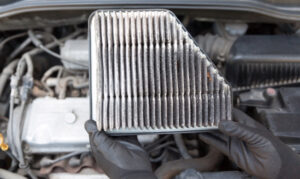Brake fluid is an essential component of your vehicle’s braking system. It is responsible for transmitting the force applied to the brake pedal to the brake calipers, which in turn apply pressure to the brake pads and slow or stop the rotation of the wheels. Over time, brake fluid can become contaminated or lose its effectiveness, so it is important to refill it periodically to ensure that your brakes are working properly and safely.
Purpose of Brake Fluid
Brake fluid is a type of hydraulic fluid that is used in the brake system of your vehicle. It is responsible for transmitting the force applied to the brake pedal to the brake calipers, which in turn apply pressure to the brake pads and slow or stop the rotation of the wheels. Brake fluid is also responsible for lubricating the brake system and preventing corrosion.
Why is it Important?
Brake fluid is an essential component of your vehicle’s braking system and plays a critical role in ensuring the safety of you and your passengers. Over time, brake fluid can become contaminated with water or other contaminants, which can reduce its effectiveness and cause damage to the brake system. In extreme cases, contaminated brake fluid can cause the brake system to fail, resulting in a loss of braking power and an increased risk of accidents.
Benefits of Refilling Brake Fluid
Refilling your brake fluid regularly has several benefits, including:
- Improving the performance of your brake system: Fresh brake fluid is more effective at transmitting the force applied to the brake pedal to the brake calipers, which can result in better braking performance.
- Preventing damage to the brake system: Contaminated brake fluid can cause damage to the brake system, including corrosion and scoring of the brake calipers, brake hoses, and brake master cylinder. Refilling your brake fluid regularly can help prevent this damage.
- Increasing the life of your brake system: Regularly refilling your brake fluid can help prolong the life of your brake system by preventing damage and ensuring proper lubrication.
- Improving the safety of your vehicle: Properly functioning brakes are essential for the safe operation of your vehicle. Refilling your brake fluid regularly can help ensure that your brakes are working properly and safely.
Step by Step Guide for Refilling Brake Fluid
Before you begin, make sure that you have the correct type of brake fluid for your vehicle. Most vehicles use DOT 3 or DOT 4 brake fluid, but some vehicles may require a different type. Check your vehicle’s owner’s manual to determine the correct type of brake fluid for your vehicle.
- Locate the brake fluid reservoir: The brake fluid reservoir is typically located in the engine compartment, near the brake master cylinder. It is usually a clear plastic container with a cap and a level indicator.
- Check the level of the brake fluid: Before refilling the brake fluid, check the level of the brake fluid in the reservoir. If the level is low, it is time to refill the brake fluid. If the level is at or above the “full” mark, there is no need to refill the brake fluid at this time.
- Remove the cap from the brake fluid reservoir: Carefully remove the cap from the brake fluid reservoir. Be careful not to spill any brake fluid, as it can damage paint and other surfaces.
- Add brake fluid: Slowly pour new brake fluid into the reservoir, being careful not to overfill it. Use a funnel to prevent spills.
- Check the level of the brake fluid: After adding brake fluid, check the level of the brake fluid in the reservoir again. The level should be between the “min” and “max” marks.
- Replace the cap: Carefully replace the cap on the brake fluid reservoir, making sure that it is securely in place.
- Check for leaks: Before starting the vehicle, check for any leaks around the brake fluid reservoir. If you notice any leaks, have them repaired as soon as possible.
- Test drive the vehicle: After refilling the brake fluid, take the vehicle for a test drive to ensure that the brakes are working properly. Pay attention to any unusual noises or vibrations while braking.
Precautions
- Always wear gloves and safety glasses when handling brake fluid.
- Keep brake fluid away from paint and other surfaces, as it can damage them.
- Never mix different types of brake fluid.
- Never reuse brake fluid that has been previously opened or that has been in contact with the brake system.
- Never overfill the brake fluid reservoir.
Conclusion
Refilling your brake fluid is an important part of maintaining the safety and performance of your vehicle’s braking system. By following the steps outlined in this guide, you can easily and safely refill your brake fluid and ensure that your brakes are working properly and safely. Remember to always check your vehicle’s owner’s manual for specific instructions and to use the correct type of brake fluid for your vehicle. Always keep an eye out for any unusual noises or vibrations when braking and have them checked by a professional if you notice any issues.










